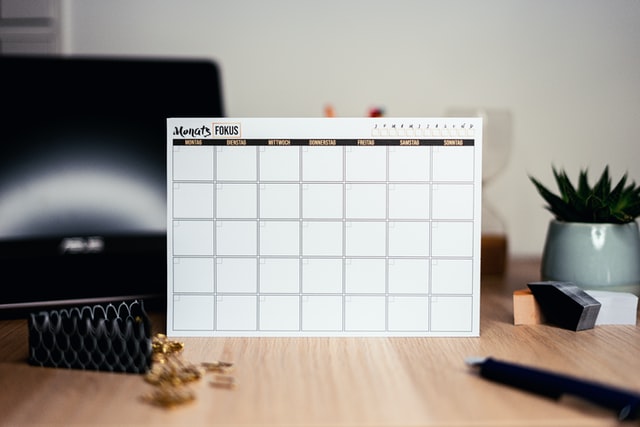Every employee on this planet has at one time found themselves trapped in a meeting that they desperately want to escape.
When a meeting feels interminable, it’s often because we’ve realized that we can’t personally contribute meaningfully to what’s being discussed.
Maybe the issues at hand don’t actually pertain to our job or area of expertise. Perhaps we weren’t given enough notice to prepare the data or notes that would have been necessary to contribute. Or maybe we’ve learned that our contributions simply get ignored or paid lip service with no follow up — so we know that engaging in the meeting is a somewhat pointless exercise.
As we sit in these kinds of meetings, we feel the pressures of our other work weighing down on us and begging for our attention as we wait for the meeting to end.
In these scenarios, being asked to sit in a meeting almost feels like an insult. After all, if our time were really being respected, we wouldn’t be required to waste it this way, right?
Of course, no one is literally trying to insult you by inviting you to a meeting — at least we doubt it!). But at The Receptionist, we have internalized the value of Respect as applying specifically to meetings.
Here’s how we make sure that meetings respect everyone’s time.
Cultivate a Culture That Encourages Speaking Up
It’s important that your employees feel like they can be direct and candid with one another.
If people think that speaking out will lead to career repercussions or harm their working relationships, they’ll stay quiet. And quiet employees will cause your team to miss out on some great ideas and other crucial information.
The ability to speak up freely also plays an important role in time-efficient meetings. In a workplace where people can voice dissent or conflicting opinions without worry, they’ll feel more comfortable asking whether or not a meeting is actually necessary, or at least whether their own participation is necessary.
They’ll also feel confident requesting a meeting agenda before agreeing to attend. Finally, during meetings, they can feel confident in observing when someone is going off on a tangent or failing to stick to the agenda (which we’ll discuss next).
Always Have a Meeting Agenda
Agendas are perhaps the most effective tools that employees have to make meetings more respectful of people’s time.
With an agenda, people can prepare appropriately so that they can be ready to articulate their points succinctly and directly. With a good agenda, there’s less hemming and hawing or scrambling for documents. An agenda makes it possible to stay on topic, and, as we mentioned before, might pave the way for people excluding themselves from the meetings and using their time in more helpful ways.
Meeting agendas don’t have to be complicated or be down-to-the-minute-specific.
All they have to do is provide meeting attendants with a few objectives and some general time constraints. They can also include any notes about specific materials or data that employees should prepare for the meeting.

Keep Meetings as Small as Possible
One of the biggest culprits behind time-wasting when it comes to meetings is a larger-than-necessary number of participants.
Of course, inviting people who won’t have much to contribute at any meeting wastes their time, in particular. But larger meetings generally tend to waste all of the participants’ time. When meetings are smaller, each person gets more time to talk and share. That’s why smaller meetings can feel more productive. People may also feel more empowered to share creative ideas when they’re not in front of a big crowd.
Interviewed in the FABRIC podcast, The Receptionist for iPad Director of Customer Experience Jessica Marshall suggests simply taking a second look at the list of meeting participants before you send an official invite to any meeting. Ask yourself whether each person on that list actually needs to be involved.
Again, it should be easy for people to excuse themselves or at least ask if they can be excused from the meeting that doesn’t directly pertain to them.
Schedule Meetings at Ideal Days and Times
Meetings can feel more wasteful if they’re held at a time that your employees feel is especially important to their other work.
For example, creative people on your team who require hours of uninterrupted work or deep concentration to get into the flow (think programmers, writers, or artists), can really feel disrupted by a meeting in the middle of the day.
Other employees may feel like they get their best and most productive work done in the mornings, and that a meeting during that time is especially frustrating.
And, of course, different departments may face stressful deadlines weekly, monthly, or annually that must be accounted for as meetings are scheduled.
The best days and times for your team to meet will vary based on participants’ unique needs. Account for those needs so people feel that their time is respected.
Eliminate the Scheduling Back-and-Forth
One of the most inefficient things about meetings happens before the meeting ever kicks off. Trying to find a time that works for all participants can require a lot of tedious calendar checking and emails that can leave people feeling frustrated.
Scheduling smaller groups is easier, another great reason to keep meetings small.
It might save everyone’s time to simply schedule important meetings at regular intervals in advance so everyone can just keep it on their calendar as a recurring commitment. You can also use a scheduling app such as Calendly to identify the best meeting times for everyone more easily.

Put Procedures in Place to Follow Up on Meeting Decisions
A meeting that initially seemed helpful and productive will later be seen as a waste of time if no actions are ever taken based on what was discussed.
If you use the time in the meeting to allocate responsibilities, but never follow up to make sure the jobs were done, that means the time was essentially wasted. If you come up with a new idea for a project or improvement together as a team but no one actually carries it out, that means the meeting time was essentially wasted.
A lack of follow-through on the action items of past meetings is sure to make people dread future meetings and fail to participate.
The solution is to create a system that tracks what was discussed in meetings and regularly follows up on the progress of any initiative discussed.
At The Receptionist, we use the Entrepreneurial Operating System to help us stay on track with our goals, both large and small. Learn more about EOS in this podcast episode: How We’ve Implemented the Traction Model at The Receptionist.
A lack of follow-through on the action items of past meetings is sure to make people dread future meetings and fail to participate in them. Click To TweetIn the End, It’s All About Culture
To learn more about how to create a culture that encourages directness, respects everyone’s time, and holds employees accountable, we always come back to our values: Fun, Authentic, Bold, Respectful, Innovative, and Collaborative.
For more on how we formed these values and live them out each day, head over to The FABRIC Show.
Share this Post

